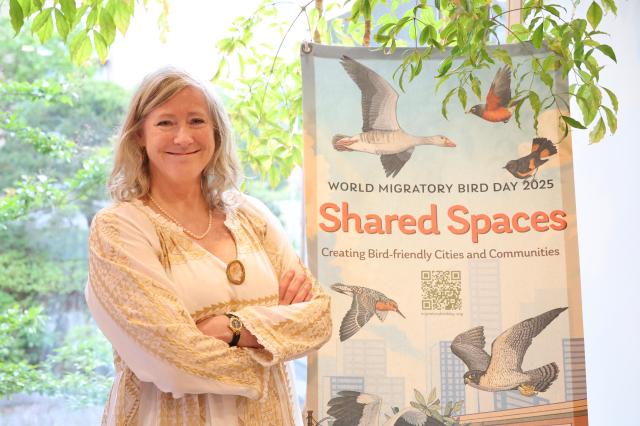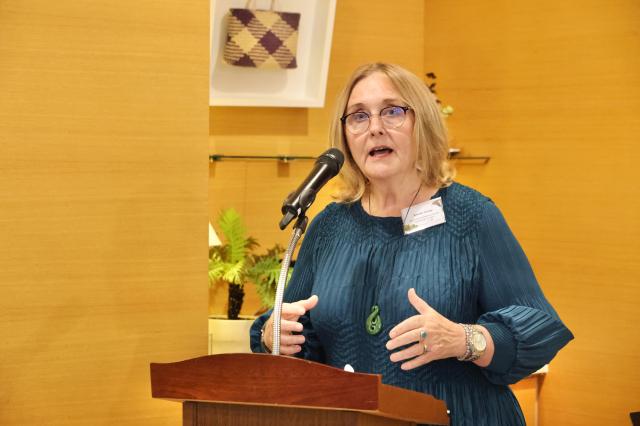
SEOUL, May 22 (AJP) - A small seabird that flies thousands of kilometers each year received the spotlight in Seoul this week, as the New Zealand Embassy in the Republic of Korea hosted a reception on Tuesday to mark World Migratory Bird Day.
The event, jointly organized by the embassy and the East-Australasian Flyway Partnership (EAAFP) was held at the ambassador’s residence bringing together diplomats, scientists, and civil society to highlight the shared responsibility of protecting migratory bird habitats.
The East Asian–Australasian Flyway spans 22 countries, linking ecosystems from Alaska to New Zealand. Along this vast route, the Korean peninsula serves as a vital stopover.
In her opening speech, New Zealand Ambassador to the Republic of Korea Dawn Bennet spoke about the kuaka, the bar-tailed godwit, and the ancient connection it symbolizes between New Zealand and the Korean Peninsula.
The kuaka, revered in Māori culture, completes one of the longest known migratory flights in the animal kingdom, traveling from Alaska to New Zealand in a non-stop journey spanning 11,000 kilometers (6,835 miles).
“According to Māori tradition, it was the flight of the kuaka that actually prompted the discovery of our country by ancient Polynesian explorers as they sailed through the Pacific Ocean,” said the ambassador. “They set sail southwards as well, following the kuaka toward the land beyond the horizon.”
The birds’ return trip in March takes them along the western and southern coasts of Korea, where they rest and refuel in tidal flats, areas now under threat from development, climate change, and habitat loss.
“The kuaka and other migratory birds provide a poignant reminder of the connections between our countries,” Bennet said. “Those connections span biodiversity and ecosystems as well as the trade, cultural and people-to-people links that we often talk about in diplomacy.”

Jennifer George, Chief Executive of EAAFP, compared the Yellow Sea to Seoul Station, a busy transit hub where migratory birds converge before continuing their flight to breeding grounds.
“They need to stop here for two months on their way north,” she said, warning that without protected wetlands, many birds won’t survive the journey. George illustrated the stakes with the story about a godwit with a tag name “ZRM” that arrived in Korea exhausted and died before completing its migration. Researchers found ZRM’s leg near the mud flats in the southwestern area of the Korean Peninsula.
“It is a quiet and a very powerful reminder of everything that they have to go through on that journey,” she said.
But not all stories end in loss. George also spoke of “AJD,” a godwit that has made the same journey for 17 years and has become something of a local legend in his New Zealand hometown. Children write about him in school, local leaders track his movements, and indigenous communities consider him part of their stewardship.
“He's a local hero,” she said. “He's part of their story. He's part of their guardianship.”
George challenged guests from universities, local government, and international organizations to consider what role they could play in supporting the ecosystems birds depend on. “What small thing can you do?” she asked.
Copyright ⓒ Aju Press All rights reserved.

